Going to Glacier National Park has been at the top of my 'to do' list for the last several years. I have wanted to see the park before the glaciers that make up the park's namesake are all gone. Regardless of whether you believe that global climate change is a result of human behavior or not, there is very little to dispute the fact that the glaciers in Glacier NP are shrinking - and quickly. I read in National Geographic that the park's glaciers could be gone as early as 2020. Other estimates have indicated that the park's glaciers could all be gone by 2030. The loss of the glaciers will reportedly have a profound impact on the environment - with significant losses to both plant and animal life.
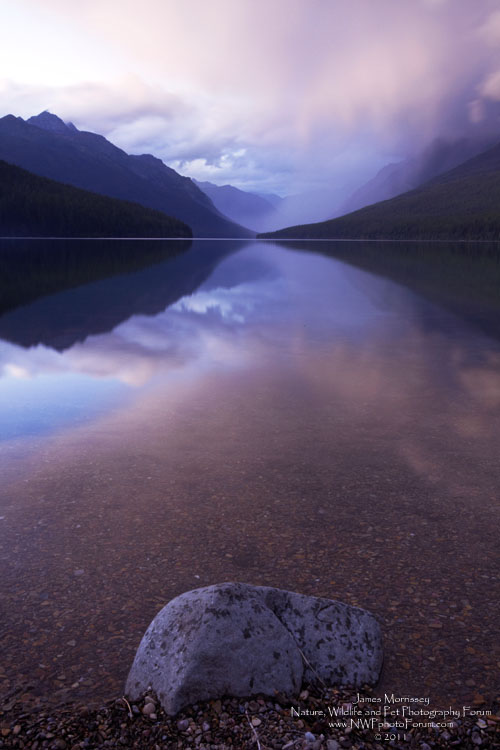
Bowman Lake Sunset - ISO 200, 32mm, F22 10 Second Exposure using a 2 Stop Hard Singh Ray Filter
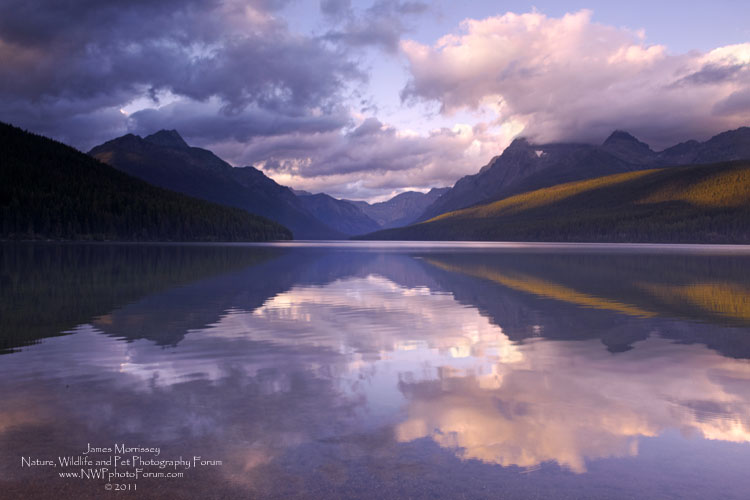
Bowman Lake Sunset - ISO 200, 28mm, F18 1/8th of a Second, using a 2 Stop Hard Singh Ray Filter
The original plan was to meet up with forum moderator, Tony Bynum and spend a week out West photographing in Big Sky Country. Tony is very fortunate in that Glacier National Park is his back yard. Literally. Tony lives in East Glacier and is a hop, skip and a jump from most of Glacier's prime sunrise location spots. If you have never checked out Tony's blog, you should. The guy is really talented (
http://www.glacierparkphotographer.com/).
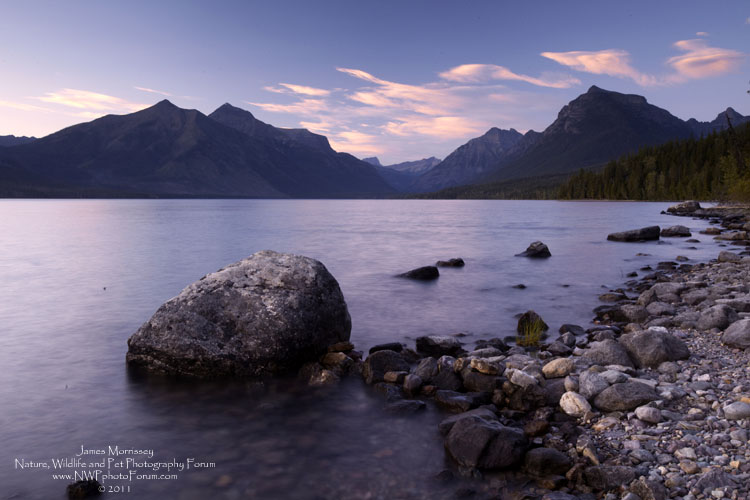
McDonald Lake Sunset - ISO 200, 33mm, F20, 4 Second Exposure using two stacked ND Filters - a 2 Stop Hard and 2 Stop Soft Singh Ray ND Filter
In February, however, I received an offer from Steve Kossack to help assist him on a workshop that he was planning for August in East Glacier. Having done several workshops with Steve, I know how he works - and I felt that it would be good to try to do the workshop with Steve and then meet up with Tony afterwards. This worked out well as Tony had an engagement in Utah and was returning home the day I was to finish with Steve's workshop. (
http://stevekossack.com/index.html)
The workshop with Steve ran pretty much as expected. It was a ton of fun - and I learned more than a few things as well during the experience. In addition to the photography, I knew several of his participants from past workshops and was very excited about seeing some of them again.
Steve had also chosen East Glacier for the workshop because most of the crown jewels of the park are located there - Two Medicine, Swift Currant and Wild Goose Island. While the West side of Glacier is the park is most visited, it is safe to say that if you want to go photograph Glacier, you need to go East. As with the other parks I have visited with Steve, it was clear that he knew Glacier in a truly intimate way.
The five days I spent with Steve and his workshop were long. We were typically out the door before 5 AM and returning to the hotel after 10 PM. As with all of his workshops, we photograph not only during peak hours of light but also during the middle of the day. There are two important lessons that I believe come out of this. The first is that good photography can be done at all times of day. It does not have to be just during the magic hours. The second is that the middle of the day can be used to find new locations that you may want to come back for during other visits. There is no way you can truly see any of the big parks in 5 days - but you can get a really nice overview.
Sadly, the weather did not always work with us, and I was not very pleased with all of my sunrise locations. Here is one shot though that I took at sunrise of Wild Goose Island.
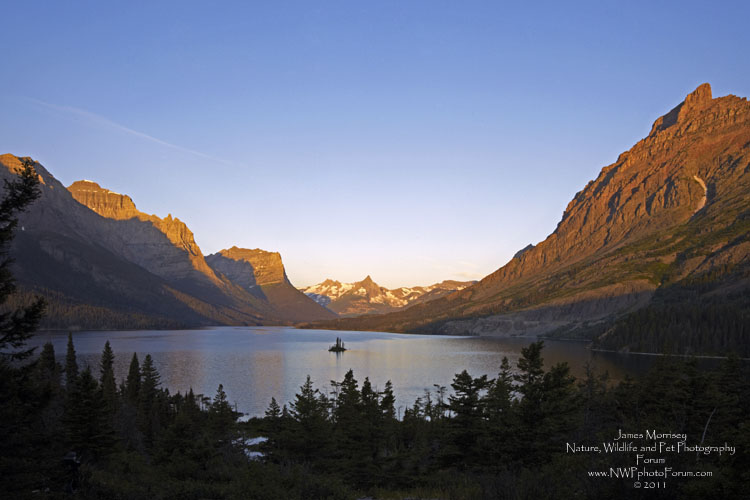
Wild Goose Island Sunrise - ISO 200, 26mm, F18, 1/6th of a Second - Using a 2 Stop Hard Singh Ray Filter
As much as I found the sunrises challenged, however, I was more than pleasantly surprised that we had several great sunsets that I had not counted on. I also got several nice shots of some mountain goats while walking up through the Logan Pass with the workshop.
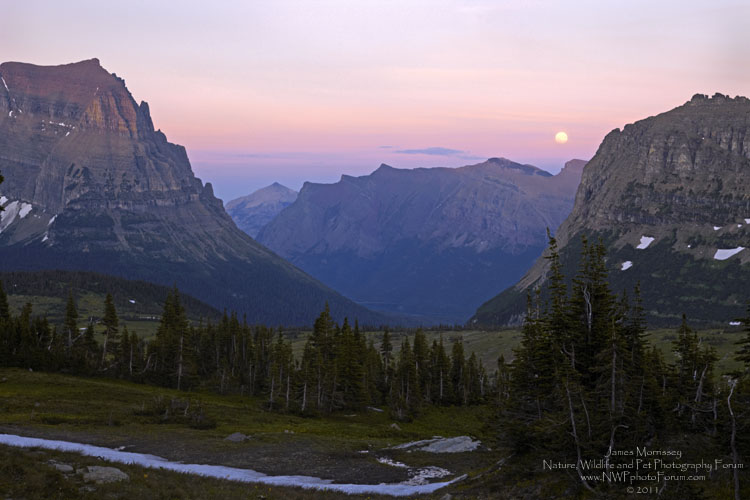
Logan Pass Visitor Center Sunset - ISO 200, 64m, F8, 1/25th of a Second, Employing a 2 Stop Hard Singh Ray ND Filter
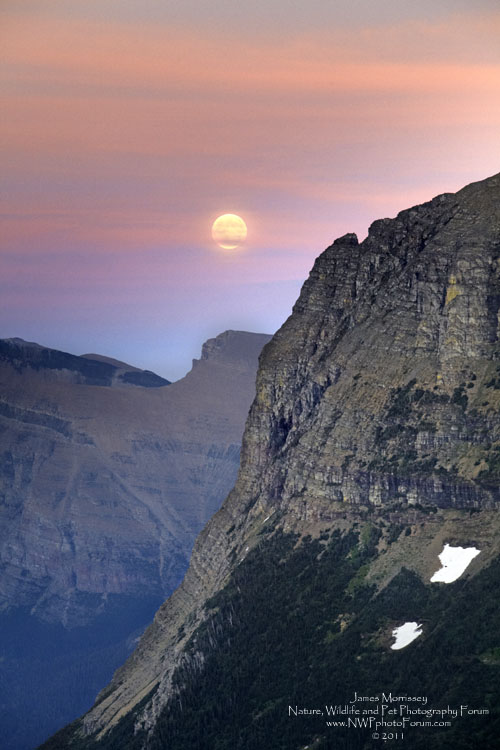
Logan Pass Visitor Center Sunset - ISO 800, 200mm, F8, 1/30th of a Second, Using a 2 Stop Hard Singh Ray ND Filter
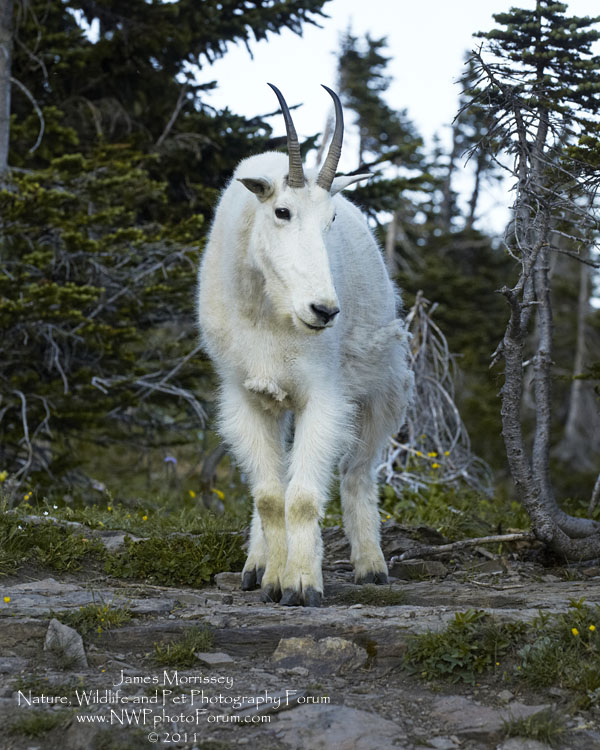
Mountain Goat at Logan Pass - ISO 800, 145mm, 1/250th of a Second at F8
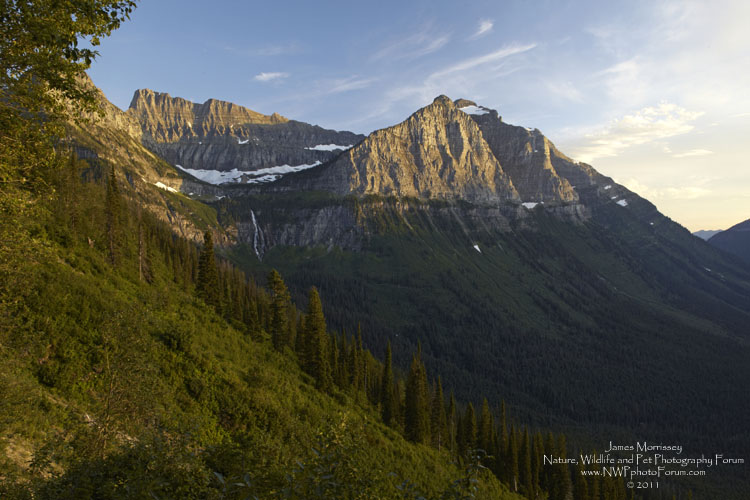
Haystack Creek Waterfall at the Weeping Wall - ISO 400, F16 at .1 Second, Using a 2 Stop Hard Singh Ray Filter
While Glacier is known to be the land of the grizzly, many of the trails were closed at the time we were out there. Unfortunately, there had been a death of a camper a couple of weeks earlier in a human-grizzly encounter that did not go well. As a result, were were not able to go hiking up many of the park's premier paths. While we did not see any grizzly during the week, I saw other things that I found just as captivating. One such thing was this hoary marmot - a first for me.
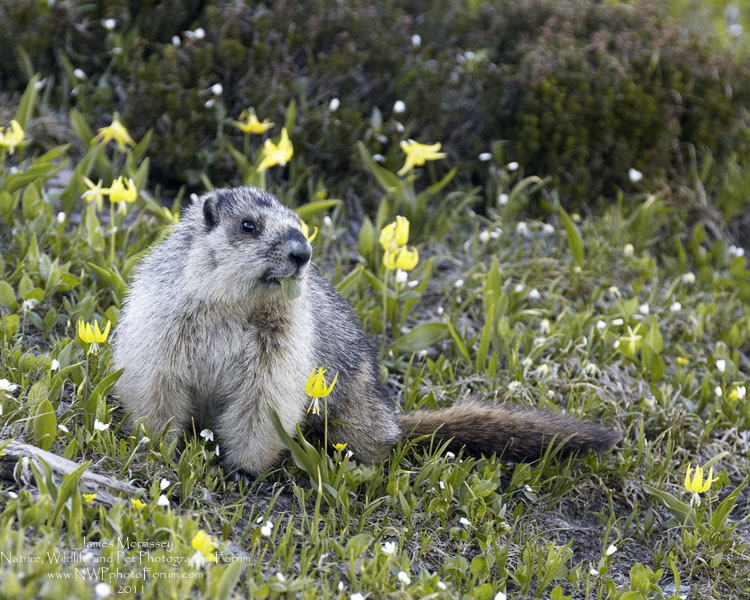
Hoary Marmot ISO 800, 459mm 1/125th of a Second at F7.1
After the workshop had ended, I drove back from Great Falls to East Glacier and visited Tony's gallery. Tony's gallery is called Glacier Impressions (
http://www.glacierimpressions.com/2011/07/glacier-impressions-gallery-reception.html) and features his work and another artist's. We then spent the next couple of days together hiking and photographing. One evening, we hiked up the Logan Pass again and photographed more mountain goats. It was here that I got the best mountain goat photos of the trip. The sun was beginning to set and I was glad that I had my Singh Ray ND cards at hand to be able to capture this goat and the mountainscape behind him.
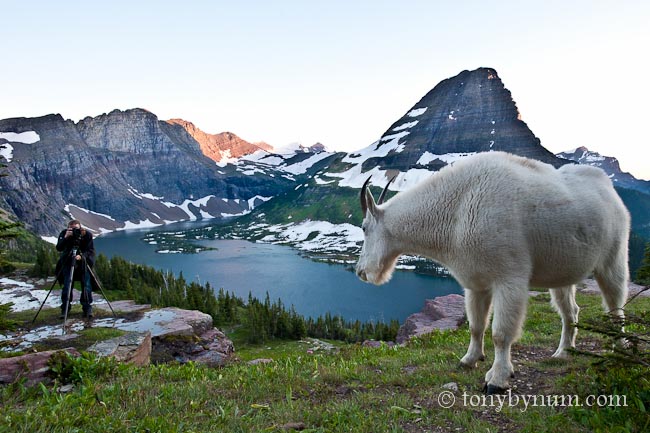
James Morrissey as photographed by Tony Bynum
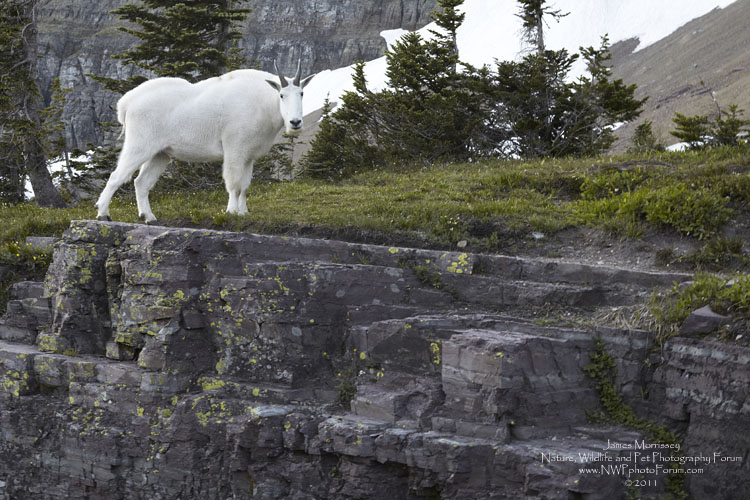
Mountain Goat - ISO 800, 60mm, F9, 1/50th of a Second
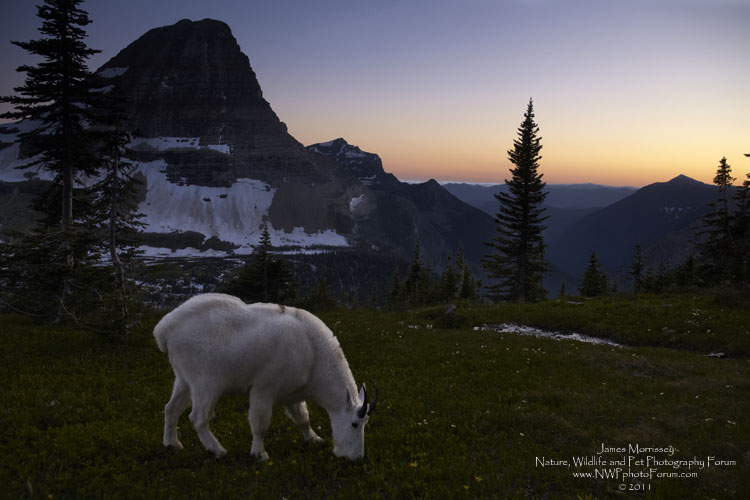
Mountain Goat Sunset - ISO 800, 28mm, F5.6 at 1/60th of a Second - Using a 2 Stop Hard Singh Ray ND Filter.
The last day of our trip, Tony arranged for us to take a plane ride out to take some photographs of an environmental project that he is working on. What an amazing event, photographing out of the small 4 seater plane. Again, the weather did not cooperate with us and we were only out for about 40 minutes - but I will say that it was an experience I will probably remember for the rest of my life.
All in all - it was a great trip and I hope to do it again - next time hopefully with Chanthee.